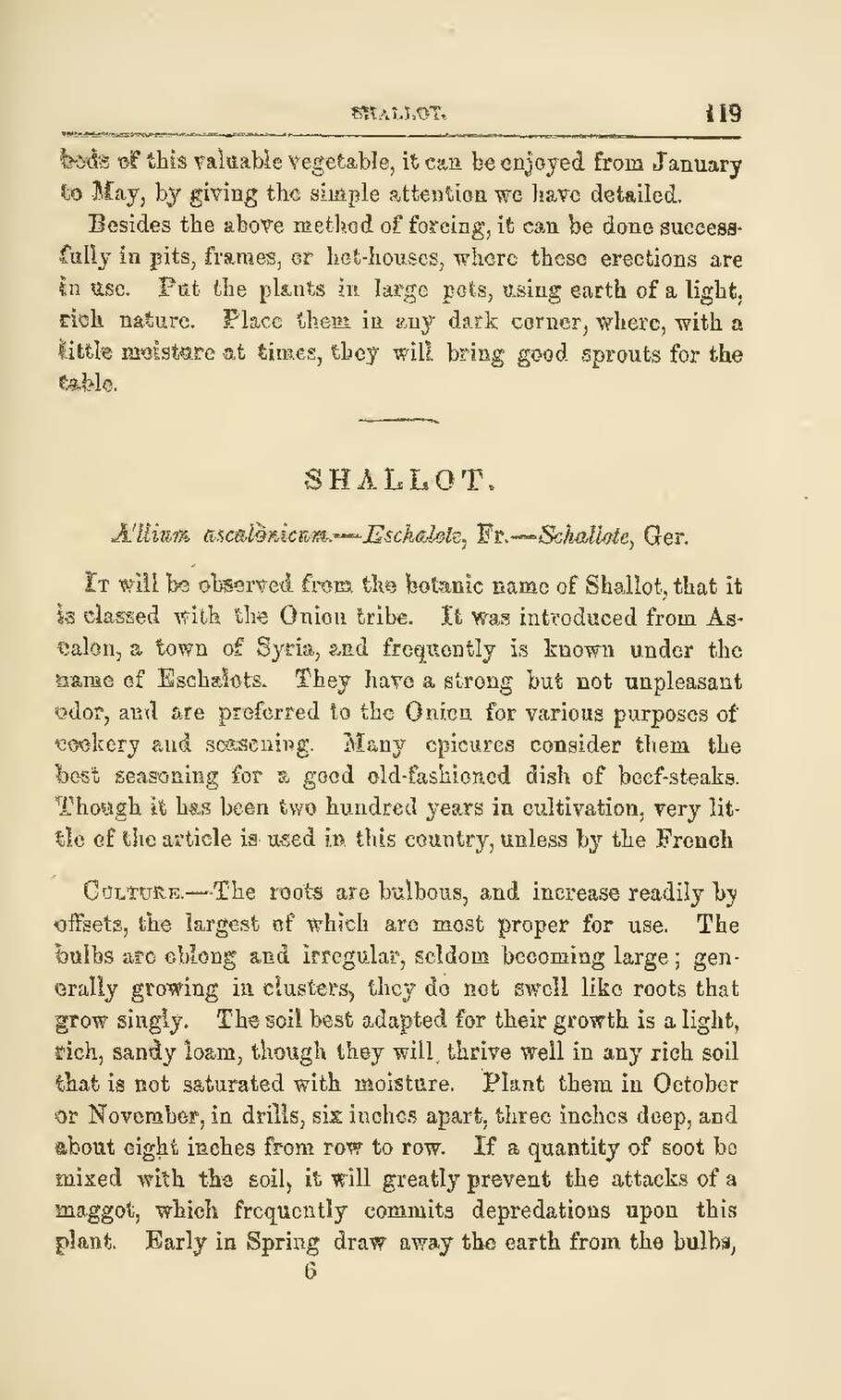beds of this valuable vegetable, it can be enjoyed from January to May, by giving the simple attention we have detailed.
Besides the above method of forcing, it can be done successfully in pits, frames, or hot-houses, where these erections are in use. Put the plants in large pots, using earth of a light, rich nature. Place them in any dark corner, where, with a little moisture at times, they will bring good sprouts for the table.
SHALLOT.
A’llium ascalònicum.—Eschalote, Fr.—Schallote, Ger.
It will be observed from the botanic name of Shallot, that it is classed with the Onion tribe. It was introduced from Asealon, a town of Syria, and frequently is known under the name of Eschalots. They have a strong but not unpleasant odor, and are preferred to the Onion for various purposes of cookery and seasoning. Many epicures consider them the best seasoning for a good old-fashioned dish of beef-steaks. Though it has been two hundred years in cultivation, very lit- tle of the article is used in this country, unless by the French.
Culture.—The roots are bulbous, and increase readily by offsets, the largest of which are most proper for use. The bulbs are oblong and irregular, seldom becoming large; generally growing in clusters, they do not swell like roots that grow singly. The soil best adapted for their growth is a light, rich, sandy loam, though they will thrive well in any rich soil that is not saturated with moisture. Plant them in October or November, in drills, six inches apart, three inches deep, and about eight inches from row to row. If a quantity of soot be mixed with the soil, it will greatly prevent the attacks of a maggot, which frequently commits depredations upon this plant. Early in Spring draw away the earth from the bulbs,
